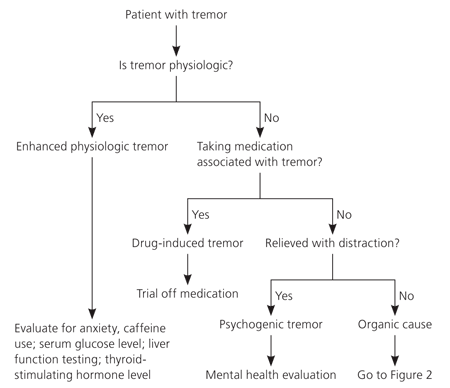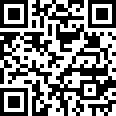See also: Parkinson's Disease
Source: Am Fam Physician. 2011 Mar 15836:697-702.
Selected Medications and Substances That May Exacerbate Tremor
Amiodarone
Amphetamines
Atorvastatin (Lipitor)
Beta-adrenergic agonists (e.g., albuterol)
Caffeine
Carbamazepine (Tegretol)
Corticosteroids
Cyclosporine (Sandimmune)
Epinephrine
Fluoxetine (Prozac)
Haloperidol
Hypoglycemic agents
Lithium
Metoclopramide (Reglan)
Methylphenidate (Ritalin)
Pseudoephedrine
Terbutaline
Theophylline
Thyroid hormones
Tricyclic antidepressants
Valproic acid (Depakene)
Verapamil
| TREMOR TYPE | DESCRIPTION | |
|---|---|---|
|
Action |
Occurs with voluntary contraction of muscle |
|
|
Includes postural, isometric, and kinetic tremors |
||
|
|
Postural |
Occurs when the body part is voluntarily maintained against gravity |
|
Includes essential, physiologic, cerebellar, dystonic, and drug-induced tremors |
||
|
|
Kinetic |
Occurs with any form of voluntary movement |
|
Includes classic essential, cerebellar, dystonic, and drug-induced tremors |
||
|
|
Intention |
Subtype of kinetic tremor amplified as the target is reached |
|
Presence of this type of tremor implies that there is a disturbance of the cerebellum or its pathways |
||
|
Rest |
Occurs in a body part that is relaxed and completely supported against gravity |
|
|
Most commonly caused by parkinsonism, but may also occur in severe essential tremor |
||
Characteristics of Psychogenic Tremor
|
Abrupt onset |
|
Absence of other neurologic signs |
|
Changing tremor characteristics |
|
Clinical inconsistencies |
|
Employed in allied health professions |
|
Litigation or compensation pending |
|
Multiple somatizations |
|
Multiple undiagnosed conditions |
|
No evidence of disease by laboratory or radiologic investigations |
|
Presence of psychiatric disease |
|
Presence of secondary gain |
|
Reported functional disturbances in the past |
|
Responsive to placebo |
|
Spontaneous remission |
|
Static course |
|
Tremor increases with |
|
attention, and lessens with distractibility |
|
Unclassified tremor (complex tremors) |
|
Unresponsive to antitremor medications |
Features of Common Tremor Syndromes
| TREMOR SYNDROME | CLINICAL FEATURES | DIAGNOSTIC TESTS | TREATMENT |
|---|---|---|---|
|
Cerebellar tremor |
Intention or postural tremor; ipsilateral involvement to lesion; abnormal finger-to-nose test; imbalance; abnormal heel-to-shin test; hypotonia |
Head computed tomography or magnetic resonance imaging |
Treat underlying cause, deep brain stimulation |
|
Enhanced physiologic tremor |
Postural tremor; low amplitude; use of exacerbating medication |
Serum glucose level, thyroid-stimulating hormone level, liver function testing, patient history to evaluate for anxiety and caffeine use |
Treat underlying cause, reassurance |
|
Essential tremor |
Postural tremor; symmetric; involves hands, wrists, lower extremities, head, or voice; family history; improvement with alcohol |
No specific test; complete blood count, thyroid-stimulating hormone level, serum chemistry profile may rule out other disease |
Propranolol (Inderal), primidone (Mysoline) |
|
Parkinsonian tremor |
Rest tremor; asymmetric; involves distal extremities; decreases with voluntary movement; bradykinesia, postural instability, and rigidity |
No specific test; positron emission tomography or single-photon emission computed tomography for atypical presentation |
Dopamine agonists, anticholinergics |
|
Psychogenic tremor |
Abrupt onset; spontaneous remission; extinction with distraction; changing tremor characteristics |
Careful history |
Mental health counseling |
Diagnostic algorithm for tremor.

Diagnostic algorithm for tremor with an organic cause.

